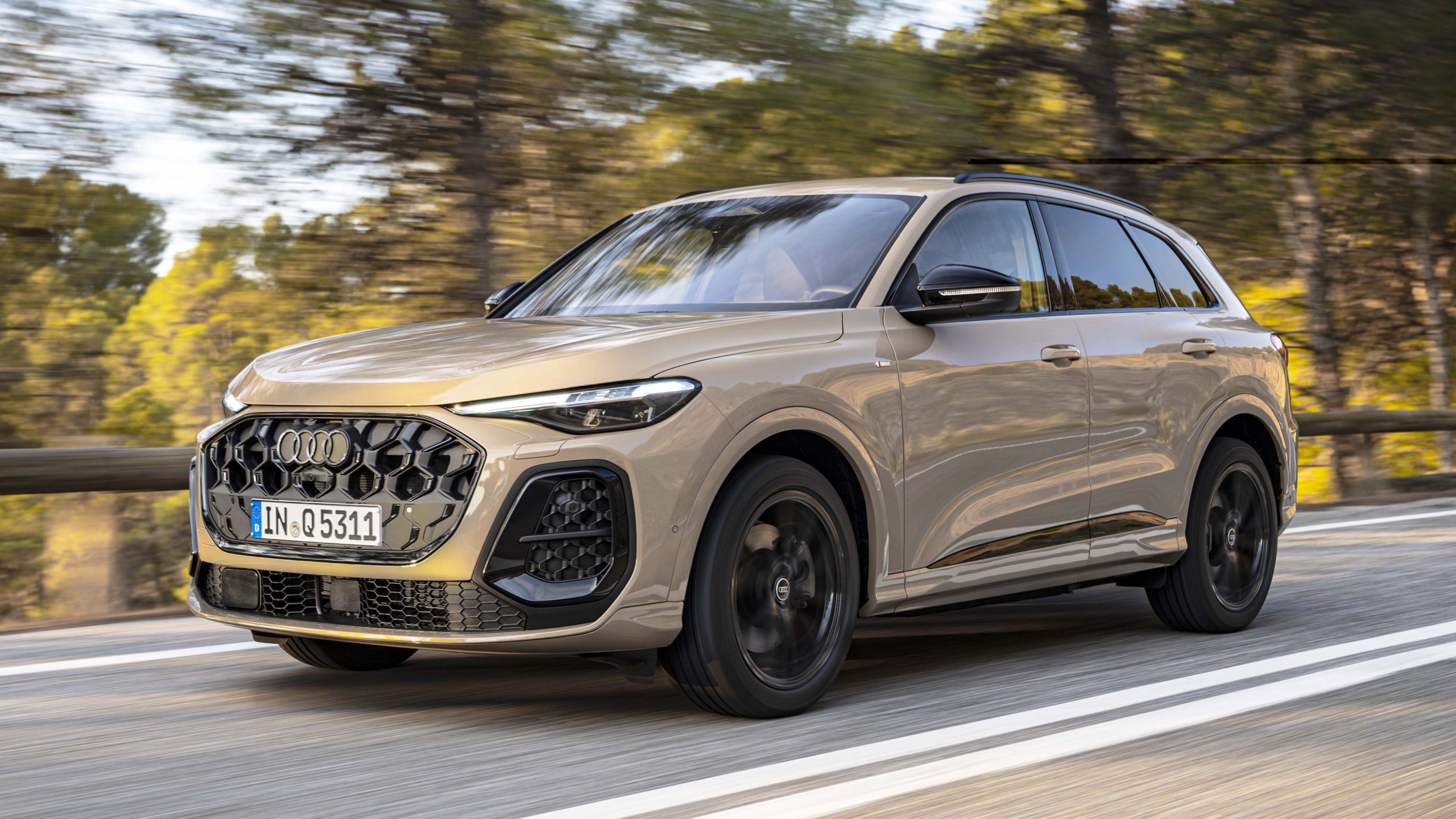In the complex world of driving, visibility is paramount. It shapes the safety and confidence with which drivers navigate the roads, influences the reaction time to unexpected hazards, and ultimately plays a crucial role in preventing accidents.
One of the most persistent challenges in vehicle safety has long been the presence of blind spots—those hidden zones around a car that the driver simply cannot see through mirrors or direct line of sight.
Blind spots contribute to countless accidents worldwide every year, especially in dense traffic, busy intersections, or when changing lanes on high-speed roads. For decades, car manufacturers and safety regulators have grappled with this problem, continually seeking solutions that reduce or eliminate these dangerous zones.
Today, thanks to advances in both automotive design and technology, some vehicles have effectively eradicated blind spots, raising the safety bar and providing drivers with a near-complete view of their surroundings.
Conversely, there remain vehicles that, due to flawed design choices, perpetuate or even worsen visibility issues, putting drivers and others on the road at significant risk.
This article explores two sides of this safety spectrum: five cars celebrated for having virtually no blind spots, and five that are dangerously designed with visibility challenges that compromise safety.
By examining these vehicles in detail, we gain insight into how physical design elements—such as pillar thickness, window size, mirror placement—and cutting-edge technologies like surround cameras, blind spot detection systems, and digital mirror replacements work in harmony to improve driver awareness.
Likewise, we understand how poor design decisions can create large blind spots, obstruct sightlines, and leave drivers vulnerable to collisions with other vehicles, cyclists, or pedestrians.
This discussion not only helps prospective car buyers and enthusiasts make informed decisions but also sheds light on the broader imperative of automotive safety innovation.
The cars that eliminate blind spots do so through a combination of architectural finesse and intelligent technology. Sleek pillars made from strong yet narrow materials, panoramic glass roofs, expansive windows, and thoughtfully positioned mirrors all create a driver’s cabin optimized for maximum visibility.
Paired with sophisticated sensor arrays—360-degree cameras, ultrasonic detectors, radar, and infrared sensors—these vehicles provide real-time information that extends the driver’s vision beyond natural limits.
The integration of driver-assist features such as automatic lane changes, adaptive cruise control, and collision avoidance systems amplifies this effect, making blind spot-related accidents increasingly rare.
Brands like Tesla, Honda, Subaru, Volvo, and Audi have emerged as leaders in this realm, offering models that balance aesthetics, performance, and unparalleled safety through smart design.
On the other hand, some vehicles struggle with visibility due to thick, obstructive pillars, high beltlines, small windows, and awkward mirror placement—features sometimes driven by stylistic trends, structural compromises, or cost-saving measures.
Older off-roaders like the Jeep Wrangler exemplify how rugged design can sacrifice sightlines, while certain compact and crossover models suffer from fashion-forward shapes that impair safety.
Even popular mainstream models, such as early Toyota Prius versions or pickup trucks like the Ford F-150, have faced criticism for dangerous blind spots that contribute to accidents. Luxury SUVs with coupe-like silhouettes, like the Range Rover Evoque, illustrate how prioritizing style over practical visibility can compromise driver safety.
This juxtaposition reveals an essential lesson: safety-conscious design must be holistic, considering not just strength or beauty, but how every curve, pillar, and window contributes to seeing—and being seen—on the road.
In the sections that follow, we delve into the details of these ten vehicles, analyzing what makes some models industry leaders in eliminating blind spots and why others pose significant risks due to their dangerous design flaws.
Understanding these factors empowers drivers to prioritize visibility and safety when choosing their next vehicle and encourages manufacturers to keep pushing boundaries toward safer roads for everyone.
5 Cars With No Blind Spots
In the modern era of automotive design, eliminating blind spots has become a critical objective for manufacturers striving to enhance driver safety and confidence.
Blind spots—those frustrating and sometimes perilous areas around a vehicle that the driver cannot see through traditional mirrors or direct line of sight—have historically been responsible for countless accidents and near misses.
Recognizing this, automakers have invested heavily in both innovative design and technological advancements that work hand in hand to reduce or eliminate these dangerous zones.
The five cars listed below not only demonstrate how vehicle architecture can optimize visibility but also illustrate how modern sensor technology, camera systems, and intelligent software provide drivers with a nearly complete understanding of their surroundings, making blind spots almost obsolete. These vehicles represent a new standard in automotive safety and design, where seeing is truly believing.
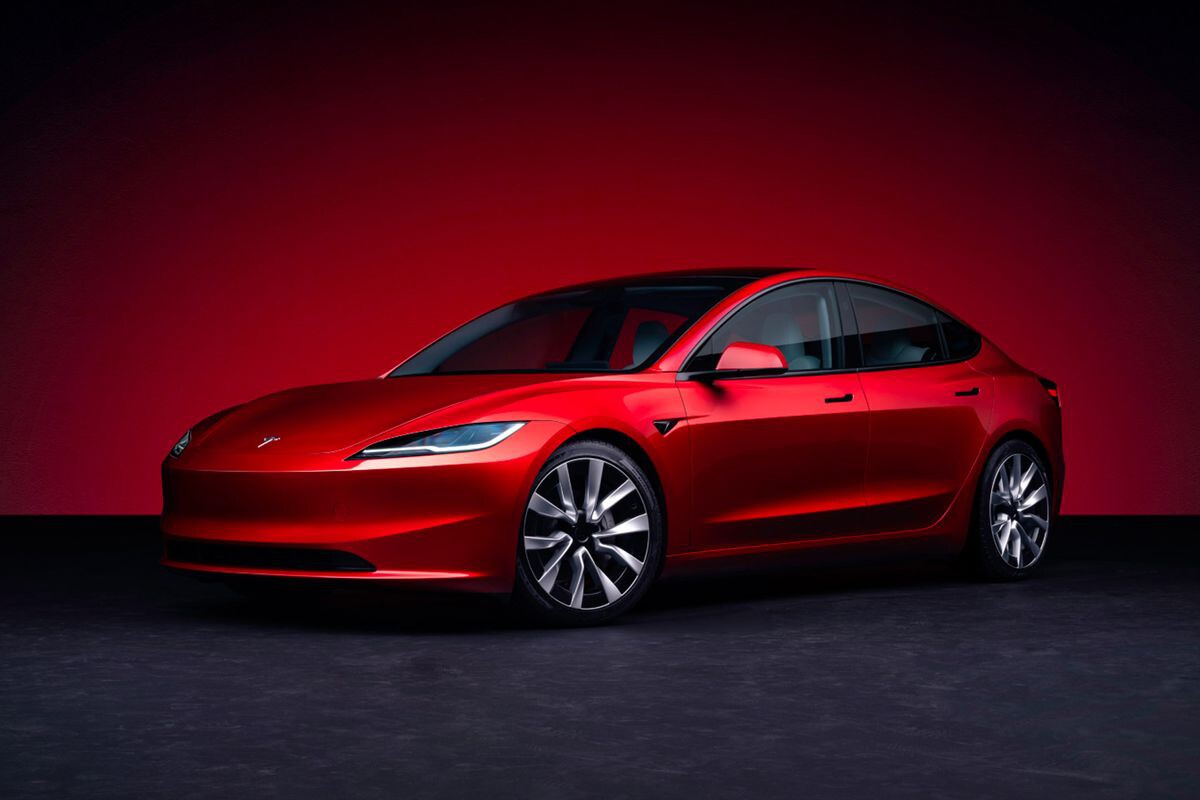
1. Tesla Model 3
The Tesla Model 3 epitomizes the future of automotive visibility with a masterful blend of architectural ingenuity and advanced sensor technology that virtually eradicates blind spots.
One of the car’s most immediately noticeable features is its extensive use of glass, beginning with a panoramic roof that extends seamlessly from front to back, flooding the cabin with natural light and offering an expansive view upward—something rare in most vehicles.
This design choice doesn’t just create a sense of openness; it fundamentally enhances spatial awareness by reducing the feeling of confinement that thick roof pillars can create.
Complementing this is Tesla’s use of impressively slender A-pillars that frame the windshield, engineered from materials strong enough to meet safety regulations while still being narrow enough to preserve the driver’s peripheral vision.
These design elements allow drivers to see more of the road, approaching pedestrians, cyclists, or vehicles, particularly when approaching intersections or navigating urban environments.
Beyond its structural design, the Model 3 leverages Tesla’s groundbreaking sensor suite to obliterate blind spots through technology. Equipped with eight surround cameras, twelve ultrasonic sensors, and a powerful radar system, the vehicle constantly monitors all directions around it.
The camera setup delivers a 360-degree view of the vehicle’s environment in real time, displayed prominently on the central touchscreen, giving drivers an augmented awareness of their surroundings far beyond what mirrors or windows alone could offer.
Tesla’s Autopilot and Full Self-Driving features further enhance safety by providing lane-change assistance, blind spot warnings, and automatic braking if the system detects an obstacle in the driver’s blind spot.
Notably, in markets where regulations permit, Tesla has even introduced mirrorless variants, replacing traditional side mirrors with external cameras that feed live video to interior displays.
This advancement eliminates the usual blind spots associated with side mirrors, particularly in difficult lighting or weather conditions, and represents a paradigm shift in automotive design.
The combination of sleek, visibility-maximizing architecture and sophisticated sensor technology makes the Tesla Model 3 a leader in driver visibility and safety, setting a high bar for other manufacturers.
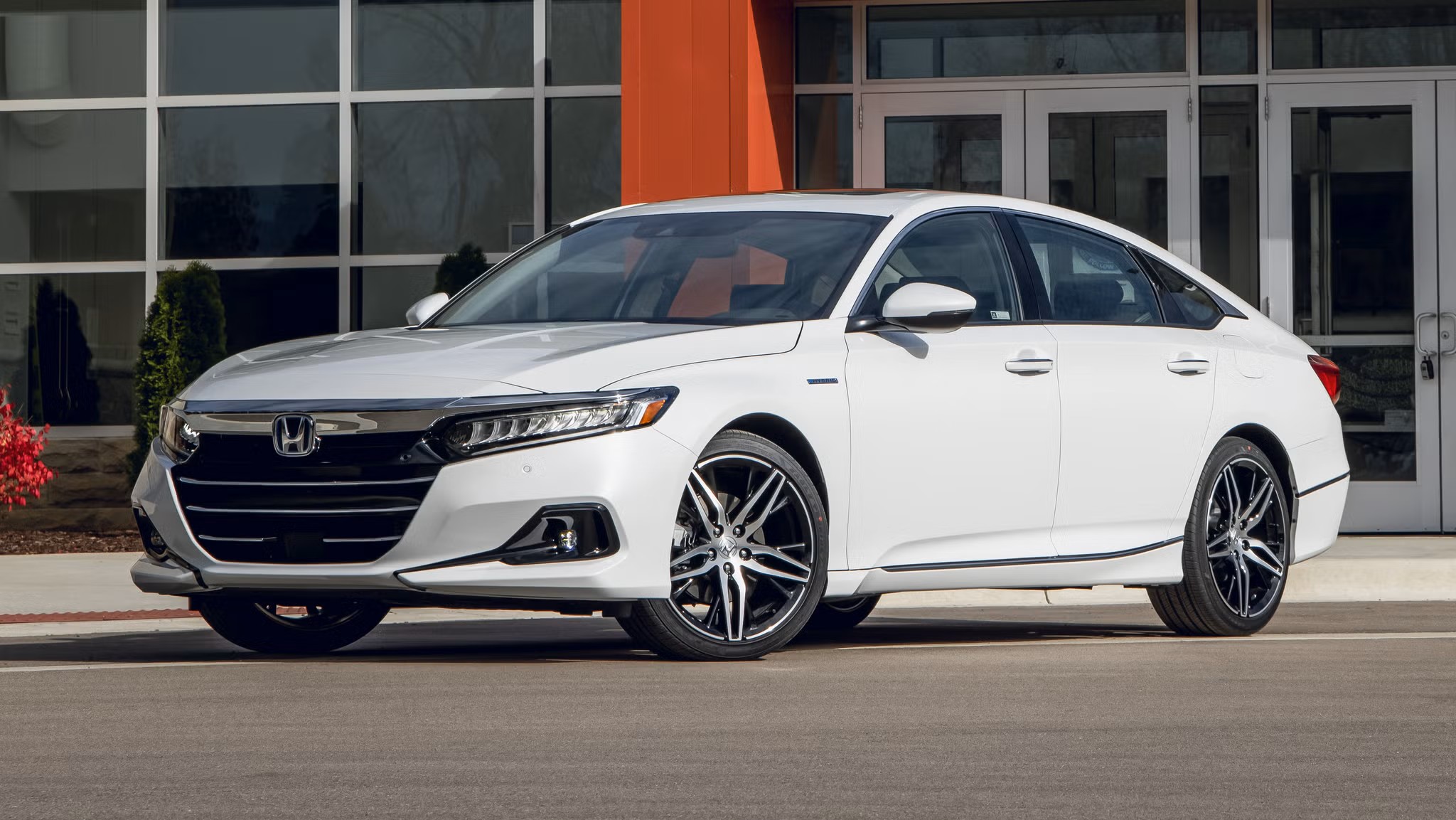
2. Honda Accord (Recent Models)
The Honda Accord has long been celebrated for its driver-friendly ergonomics and thoughtful design, and the latest generations raise the bar further by addressing one of the most critical safety concerns: blind spots. Honda’s engineers have approached this challenge by reimagining the vehicle’s window and pillar layout to provide an impressively broad field of vision.
The front A-pillars, which traditionally create the most significant blind spots due to their thickness and placement, have been slimmed down without compromising structural integrity, allowing drivers to maintain better sightlines around corners.
This is particularly beneficial in city driving, where spotting pedestrians, cyclists, or cross-traffic early can prevent accidents. Rear pillars are similarly designed with visibility in mind, maintaining a balance between vehicle rigidity and sightlines.
In addition to physical design, the Accord incorporates a comprehensive suite of technological aids that further mitigate blind spots. Honda Sensing, the company’s advanced driver-assist technology, includes blind spot monitoring, which alerts drivers with visual indicators on the side mirrors and auditory warnings when vehicles enter adjacent lanes.
Complementing this system is a multi-angle rearview camera that provides different viewing perspectives—normal, top-down, and wide-angle—when the vehicle is reversing, dramatically enhancing rear visibility. This feature is particularly useful in tight parking situations or crowded urban environments where obstacles can be difficult to detect.
Furthermore, the Accord’s large side windows and low beltline contribute to an open cabin feel that aids peripheral awareness, allowing drivers to better detect movement on the sides without needing to rely solely on technology.
Inside the car, the dashboard and controls are ergonomically arranged to minimize distractions, encouraging drivers to keep their eyes on the road rather than fumbling with controls. The Honda Accord demonstrates that a well-rounded approach—melding design, technology, and user experience—can effectively eliminate blind spots and improve road safety.
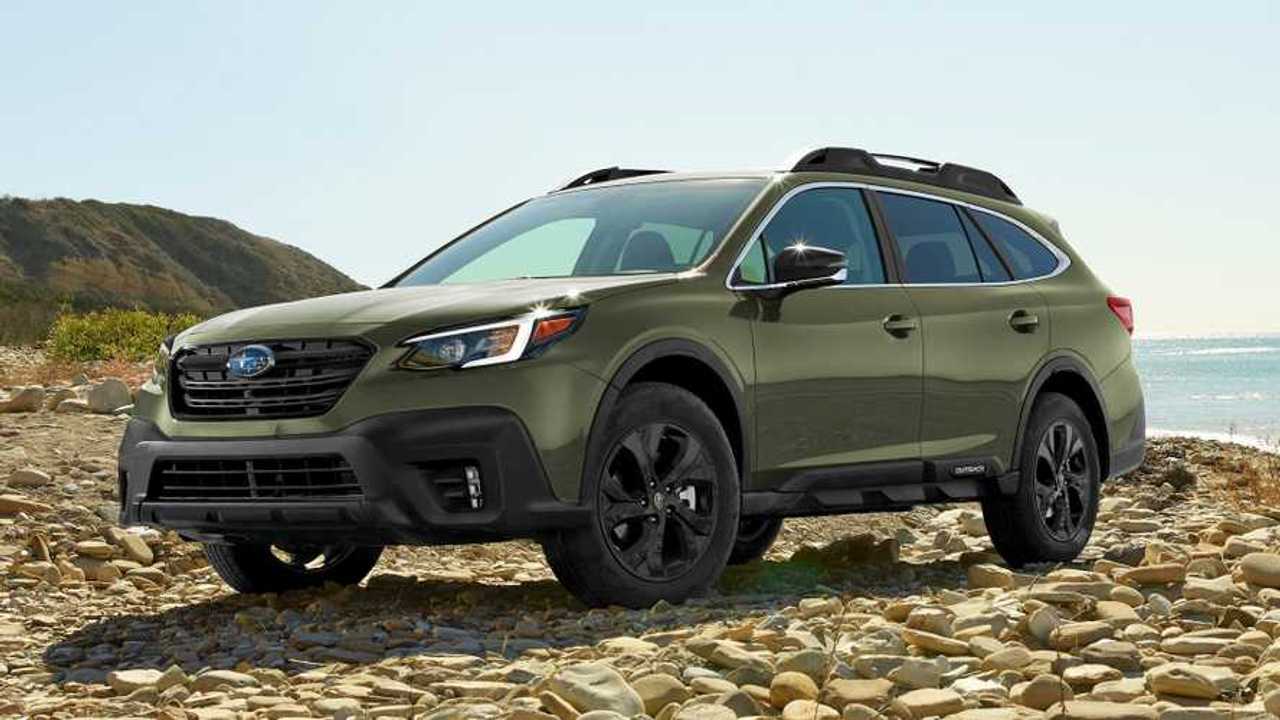
3. Subaru Outback
The Subaru Outback is a standout example of how a vehicle designed for rugged versatility can also excel in driver visibility and blind spot reduction. Built for a diverse range of driving conditions—from highway cruising to off-road trails—the Outback’s design prioritizes situational awareness, recognizing that drivers must be able to spot hazards in all environments.
Physically, the Outback benefits from large, clear side windows and relatively thin, tapered pillars that maximize the driver’s line of sight. Unlike many SUVs that sacrifice window size for a bulkier, more imposing frame, the Outback maintains generous glass areas that make the cabin feel airy and open.
This translates into safer driving because the driver can more easily see other vehicles, pedestrians, and cyclists that might otherwise remain hidden. Subaru enhances this physical design with EyeSight Driver Assist Technology, one of the industry’s most highly regarded systems.
EyeSight uses stereo cameras positioned near the rearview mirror to monitor the road ahead, but it also plays a critical role in reducing blind spots. By detecting vehicles in adjacent lanes and monitoring traffic movement, EyeSight alerts drivers to potential hazards entering their blind zones.
This system can even intervene by applying brakes or steering assistance if it detects an imminent collision risk. Additionally, the Outback’s side mirrors are thoughtfully sized and positioned to cover the widest possible field of view, further reducing blind spots.
Rear visibility benefits from a large rear window and available backup camera, aiding in safe reversing and parking. By combining robust physical visibility features with intelligent technology, the Subaru Outback offers a comprehensive solution to blind spots that supports confident, safe driving in varied conditions.
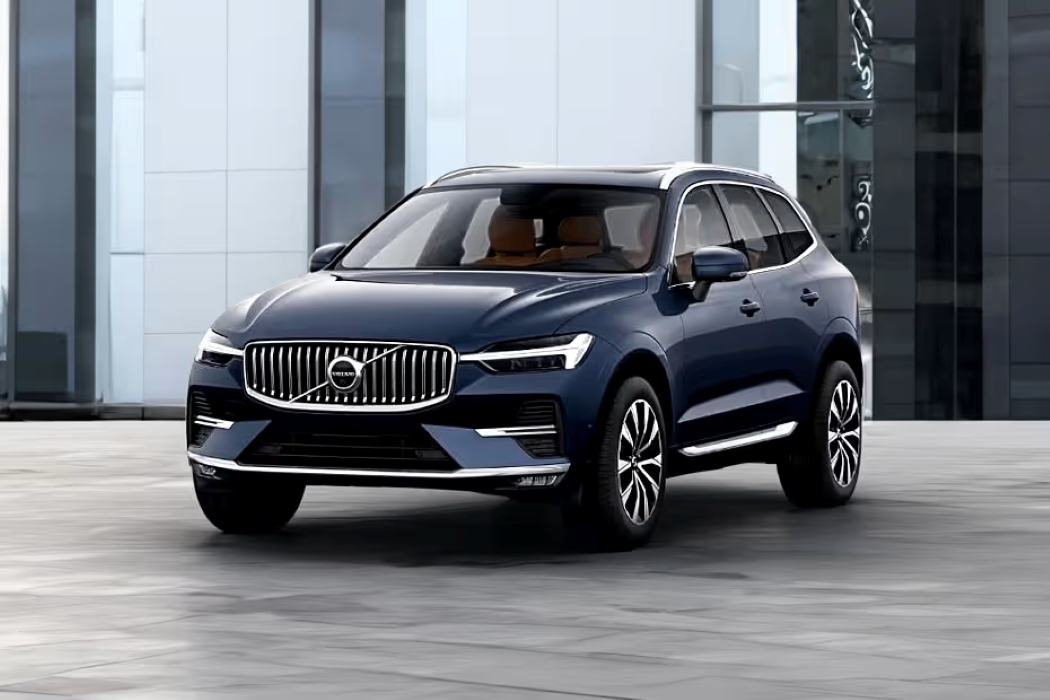
4. Volvo XC60
Volvo has cultivated a legacy of safety that few other manufacturers can match, and the XC60 is a perfect embodiment of this commitment, especially when it comes to visibility and blind spot management.
The vehicle’s design reflects a philosophy that visibility is not a luxury but a necessity, starting with its slender A-pillars that strike a careful balance between safety standards and minimal obstruction.
Unlike many SUVs that employ thick pillars for rigidity at the cost of visibility, Volvo’s engineers have leveraged advanced materials and structural techniques to maintain safety without blocking the driver’s view.
This structural elegance extends to the XC60’s expansive side windows and low beltline, which collectively provide a panoramic field of vision. This is particularly important in situations like urban driving or highway lane changes, where rapid assessment of the vehicle’s surroundings is critical.
In addition to physical design, the XC60 incorporates Volvo’s Blind Spot Information System (BLIS), a sophisticated technology that continuously monitors the vehicle’s flanks and rear. BLIS doesn’t merely warn drivers with lights in the side mirrors; it also actively helps maintain lane safety by providing gentle steering corrections when an unsafe lane change is attempted.
This proactive feature adds a layer of protection that many competitors lack. The vehicle also offers a 360-degree camera system that stitches together images from multiple cameras to give drivers a comprehensive bird’s-eye view of their surroundings, simplifying parking and maneuvering in tight spaces.
Inside the cabin, Volvo’s minimalist design ethos keeps the dashboard free of unnecessary clutter, positioning controls and displays to keep the driver’s eyes focused on the road.
The combination of architectural clarity and intelligent assistance makes the XC60 a flagship for near-complete blind spot elimination, enhancing driver confidence and reducing accident risk.
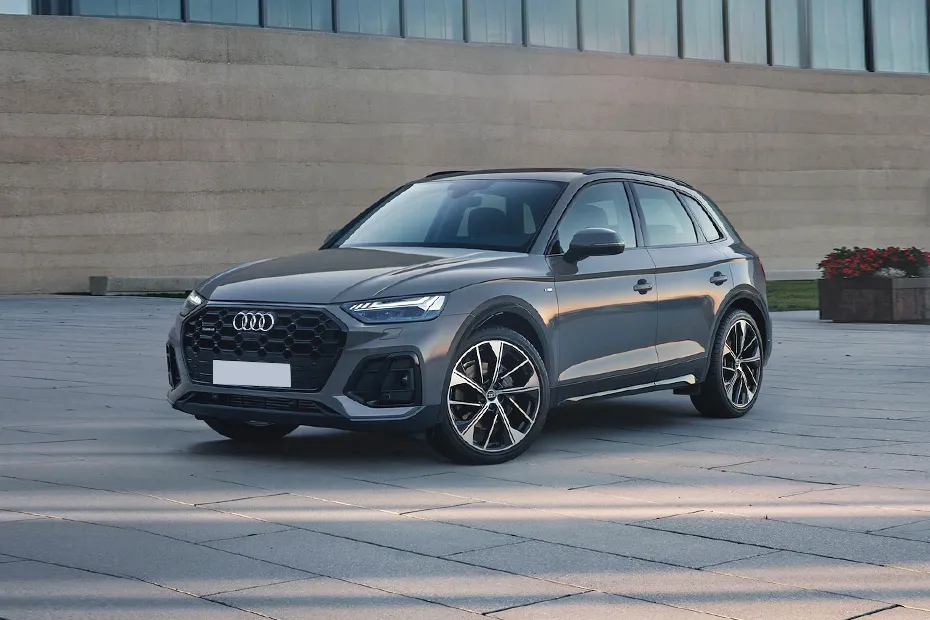
5. Audi Q5
The Audi Q5 masterfully integrates aesthetic refinement with practical safety, producing a midsize luxury SUV that offers exceptional visibility and minimal blind spots.
The Q5’s exterior design tackles one of the biggest challenges in SUVs—obstructed sightlines caused by thick pillars and elevated beltlines—by maintaining relatively slim A-pillars and a low window beltline that provides the driver with a wide field of view.
These design choices allow drivers to see approaching vehicles, pedestrians, and cyclists sooner, especially in scenarios like merging or navigating busy city streets.
The Q5 also places its side mirrors strategically to optimize the angle of view while reducing glare and minimizing blind spots caused by distortion. This attention to detail in both design and mirror placement ensures drivers have maximum awareness of their surroundings.
The vehicle’s technological arsenal further bolsters safety and visibility. The top-view camera system uses multiple cameras to create a real-time, composite overhead image that helps drivers better understand spatial relationships around their vehicle.
Audi’s Blind Spot Monitoring system complements this by alerting the driver when vehicles enter the SUV’s blind zones, reducing the risk of side collisions during lane changes or tight maneuvers.
The Q5’s cabin design also supports visibility by offering a high seating position and a clean, uncluttered dashboard that keeps distractions to a minimum.
Combined, these features provide drivers with an almost complete awareness of their environment, allowing for safer and more confident driving experiences. The Audi Q5 proves that a luxury vehicle can prioritize safety and driver visibility without sacrificing style or performance.
5 Cars That Are Dangerously Designed
While many modern cars make impressive strides in reducing blind spots and enhancing driver visibility, there remain some models whose design choices significantly compromise safety. Dangerous design flaws can stem from structural decisions, window placements, thick pillars, poorly positioned mirrors, or an overreliance on outdated technologies.
These factors contribute not only to large blind spots but also to restricted views that increase the likelihood of accidents, especially in busy traffic or complex driving environments.
The following five vehicles are notorious for their challenging visibility issues and design decisions that have put drivers—and sometimes pedestrians and cyclists—at risk. Understanding these pitfalls can help drivers make informed decisions and encourage manufacturers to rethink safety-focused design.

1. Jeep Wrangler (Older Generations)
The Jeep Wrangler, especially in its older generations, is a classic example of a vehicle whose rugged, off-road-oriented design directly conflicts with driver visibility and blind spot reduction.
While the Wrangler’s boxy, upright shape and large tires contribute to its legendary off-road capability, these same features severely limit the driver’s field of view on regular roads.
Thick, wide A-pillars, necessary for structural support on tough terrain, create massive blind spots, especially at intersections or when trying to spot oncoming traffic from the sides.
The windshield itself is smaller and more vertical than in many modern cars, further constraining sightlines. Rear visibility is also compromised due to the high rear deck and spare tire mounted on the tailgate, which blocks the driver’s view and narrows the rear window significantly.
Compounding these physical issues, older Wrangler models lack modern technological aids like blind spot monitoring or surround-view cameras that could compensate for design shortcomings.
Drivers are forced to rely on manual checks that are often insufficient in complex urban environments or fast-moving traffic, increasing the risk of side collisions or failure to see vulnerable road users like cyclists.
The Wrangler’s large, flat side mirrors help somewhat, but the sheer size of blind spots caused by pillar thickness and vehicle shape overshadows this benefit.
While newer Wranglers have introduced advanced driver assist features, the fundamental design constraints remain a problem for everyday driving. This illustrates how prioritizing rugged style and off-road function over visibility can have serious safety trade-offs.
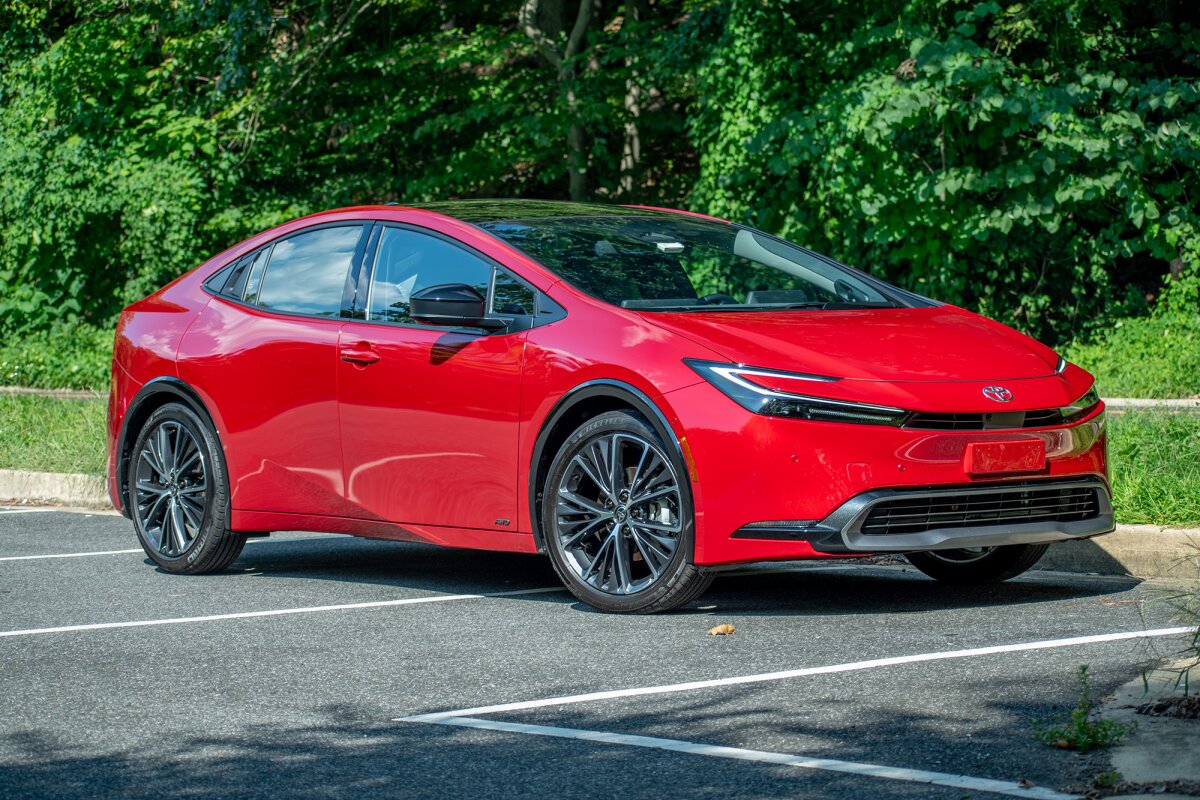
2. Toyota Prius (Early Generations)
The Toyota Prius, especially the early models, gained a reputation for environmental efficiency but simultaneously struggled with visibility issues that affected driver safety. The Prius’s distinctive, aerodynamic hatchback shape, while excellent for reducing drag and increasing fuel economy, unfortunately sacrifices rearward and lateral visibility.
The rear pillars, designed to slope sharply and support the car’s unique shape, are notoriously thick and angled in ways that create large blind spots on both sides of the vehicle.
This is particularly problematic when changing lanes or merging on highways, where failing to see another car can result in collisions. Additionally, the rear window on early Priuses is divided by a horizontal bar that visually disrupts the driver’s rear view, further impairing situational awareness.
Another design flaw is the relatively small side windows and higher beltline, which restrict the driver’s peripheral vision. This creates an enclosed cockpit feeling and limits the driver’s ability to detect pedestrians, cyclists, or vehicles approaching from the side, critical in urban environments.
Unlike some competitors, early Prius models did not come standard with blind spot detection or rear cross-traffic alert systems, forcing drivers to rely heavily on manual shoulder checks.
While these shortcomings have been addressed to some extent in newer models with more advanced technology and improved window designs, the Prius’s early design stands as a cautionary tale about the dangers of prioritizing aerodynamic efficiency over driver visibility.
The Prius shows how even eco-friendly design must account for fundamental safety needs to avoid creating blind spots that can lead to accidents.
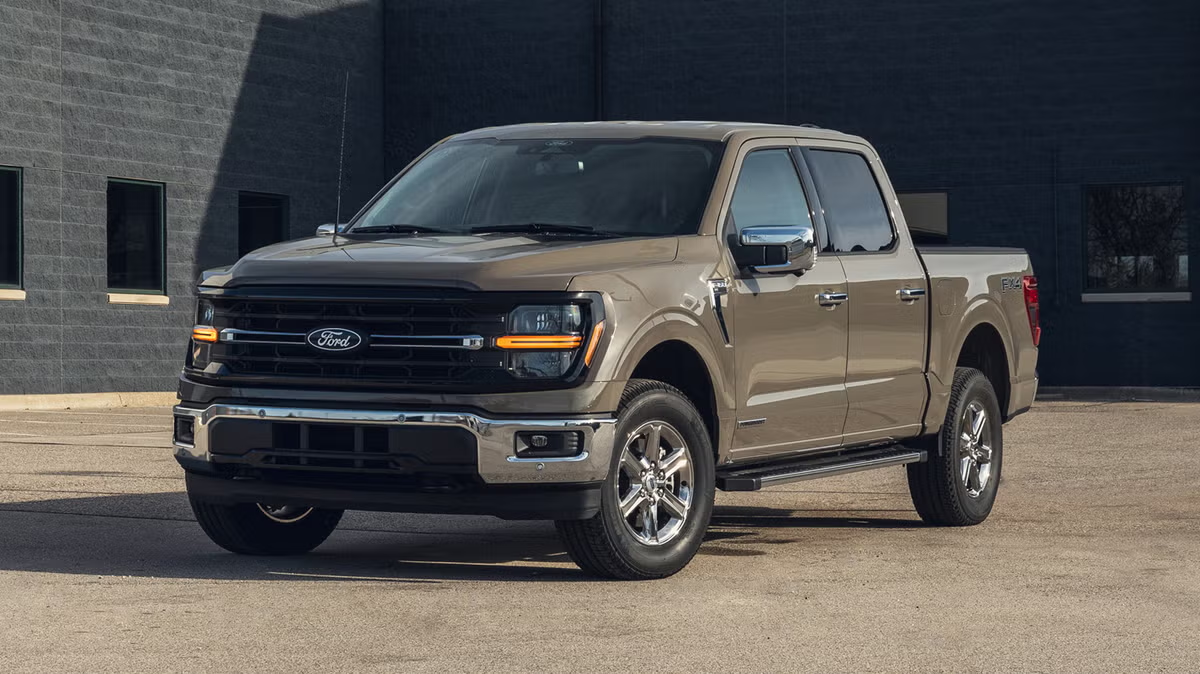
3. Ford F-150 (Older Models with Large Mirrors and Thick Pillars)
The Ford F-150 is America’s best-selling truck, known for its power and versatility, but certain older models exhibit design elements that compromise visibility and blind spot awareness, leading to dangerous driving conditions.
Pickup trucks, by nature, tend to have limited rearward visibility due to their extended cargo beds and higher ride heights, and early F-150 designs did little to alleviate these issues.
The thick A-pillars, combined with large side mirrors that often create visual distortion and glare, contribute to significant blind spots on both the front sides and rear quarters of the vehicle. The truck’s bulk means that drivers frequently struggle to see smaller vehicles, motorcycles, or pedestrians when making lane changes or turns.
Rear visibility is often limited by the size of the rear window and the tailgate’s design, which can obscure the view behind the truck bed. Unlike modern trucks equipped with backup cameras and blind spot detection systems, earlier F-150s relied heavily on manual checks and traditional mirrors, which proved insufficient in busy or complex traffic environments.
This has contributed to a higher incidence of accidents involving trucks striking smaller road users that remained unseen in blind spots. Additionally, the truck’s imposing size and design can create a false sense of security, where drivers may underestimate how difficult it is to detect nearby hazards, especially when backing up or merging.
Although recent Ford models have significantly improved visibility and driver assistance technology, the legacy of these older designs continues to affect perceptions of safety in pickup trucks.

4. Nissan Juke
The Nissan Juke is a subcompact crossover known for its quirky styling and sporty handling, but its distinctive design comes with serious visibility drawbacks that pose safety risks.
The Juke’s thick C-pillars and high beltline severely restrict rearward and side visibility, creating large blind spots that can make lane changes and parking maneuvers especially hazardous.
The car’s rear window is small and heavily angled, limiting the driver’s view directly behind the vehicle and making it difficult to spot pedestrians, cyclists, or approaching vehicles.
This problem is exacerbated by the Juke’s design choices that prioritize aesthetic uniqueness over practical visibility, leading many drivers to report frequent difficulties in judging distances when reversing or merging.
Moreover, the Juke’s side mirrors, while decently sized, do not fully compensate for the large blind areas caused by the rear design. The combination of limited rear visibility and thick pillars means drivers must constantly rely on shoulder checks, which may not be performed diligently in fast-moving traffic.
Early Juke models did not offer advanced blind spot monitoring or 360-degree cameras as standard, leaving drivers without technological assistance to counterbalance the visibility issues.
The car’s design has been praised for standing out visually, but from a safety perspective, the trade-off has been a compromised driving experience that requires extra caution and vigilance to avoid accidents. This example underscores the dangers of prioritizing styling over the essential need for clear sightlines.
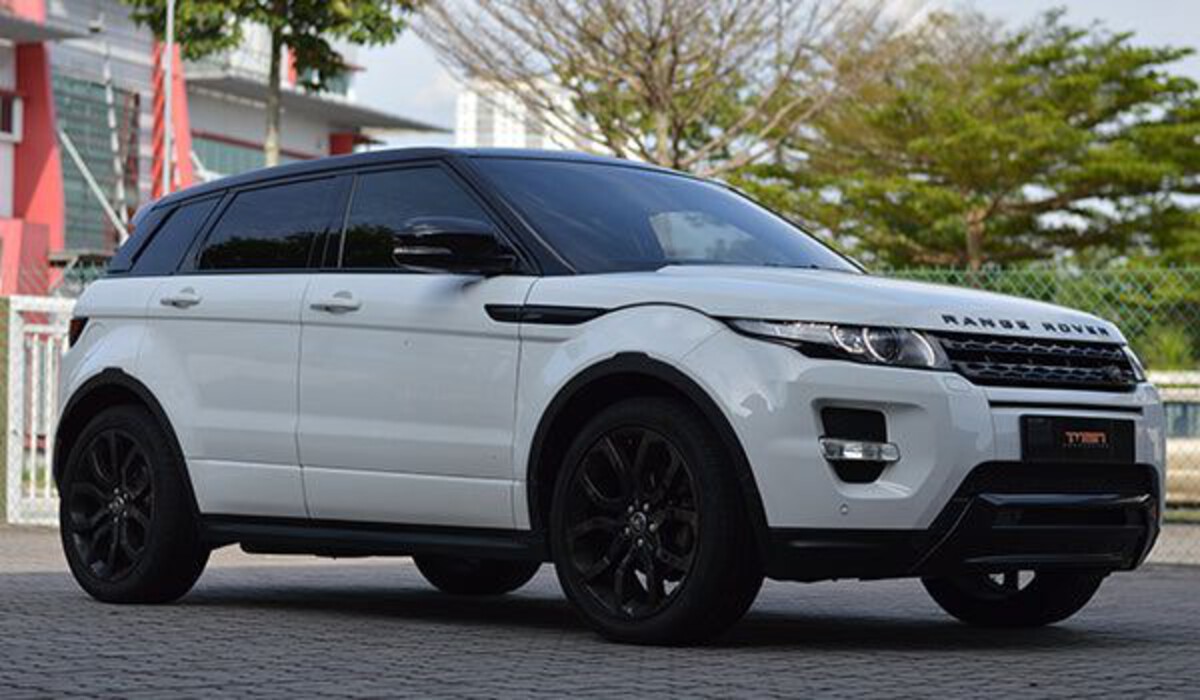
5. Range Rover Evoque (Early Models)
The Range Rover Evoque is a luxury compact SUV that quickly gained popularity for its stylish, coupe-like design, but this aesthetic appeal has come with notable compromises in driver visibility and blind spot awareness, particularly in its early versions.
The Evoque’s steeply raked roofline and thick C-pillars severely limit rearward visibility, making it difficult for drivers to see vehicles or pedestrians behind and beside the car. These blind spots are particularly problematic in urban environments where tight maneuvers and quick lane changes are common.
The rear window is smaller than in traditional SUVs, and the rear headrests further obstruct sightlines, creating a visual tunnel effect that confines the driver’s rearward view.
Adding to the problem is the Evoque’s relatively high beltline and narrow side windows, which restrict lateral visibility and increase blind spot areas on both sides. While the car offers a luxurious interior and a high driving position, these benefits do not fully compensate for the reduced field of view created by its coupe-inspired silhouette.
Early models did not include comprehensive blind spot detection or advanced camera systems as standard, placing the onus on the driver to compensate for poor visibility through manual checks, which can sometimes fail in busy traffic conditions.
Though more recent Evoque versions have introduced improved technology and subtle design tweaks to address these issues, the early model’s dangerous design compromises serve as a reminder that style should never come at the expense of safety-critical visibility.
Also Read: 5 Cars That Don’t Rattle on Dirt Roads and 5 That Fall Apart Instantly
The exploration of vehicles that either successfully eliminate blind spots or suffer from dangerously poor visibility reveals a fundamental truth about automotive safety: design matters deeply, not just in aesthetics or performance but in the very basic ability of a driver to see their environment.
Cars with no blind spots represent a triumph of engineering and innovation, where every aspect of the vehicle’s form, from the narrowness of pillars to the expansiveness of glass surfaces, works in tandem with cutting-edge technology to provide drivers with a comprehensive, real-time understanding of their surroundings.
These vehicles are more than just convenient or comfortable; they actively reduce the chances of accidents by closing the dangerous gaps that have historically put drivers and vulnerable road users at risk.
As technology continues to advance, with improvements like digital mirrors replacing physical ones and increasingly sophisticated sensor networks, the goal of achieving near-perfect visibility for every driver grows ever closer to reality.
Brands such as Tesla, Honda, Subaru, Volvo, and Audi illustrate that integrating thoughtful design with intelligent assistance systems can produce vehicles that are not only safer but also more enjoyable and less stressful to drive.
Conversely, the cars identified as dangerously designed remind us of the high cost of neglecting visibility in the name of style, tradition, or other priorities.
Whether it’s the thick pillars and limited windows of rugged off-roaders like the Jeep Wrangler, the aerodynamic but restrictive rear design of early Toyota Priuses, or the obstructed sightlines of luxury SUVs with coupe-like profiles, these vehicles demonstrate how blind spots continue to endanger drivers.
While some of these designs may have been acceptable or even innovative when introduced, the evolving landscape of vehicle safety standards and technology has made their shortcomings more apparent and their risks less tolerable.
In some cases, the absence of advanced driver-assist technologies or poor integration of basic visibility features exacerbates these risks, leaving drivers without crucial warnings or aids.
This underscores the vital importance of continuous safety reassessment in automotive design—fashion and utility must never come at the expense of clear sightlines and driver awareness.
The implications of this dichotomy extend beyond individual drivers. Improved visibility in vehicles leads to fewer collisions involving pedestrians and cyclists, reduces the frequency of side-swiping and merging accidents, and alleviates traffic congestion caused by crashes and near misses.
It also has societal benefits, such as lowering insurance costs, reducing emergency response burdens, and enhancing public confidence in road safety.
Conversely, cars with dangerous blind spots contribute disproportionately to traffic incidents and injuries, eroding these gains. For policymakers and safety advocates, the lessons are clear: regulations and incentives that encourage or mandate better visibility features and technologies can save lives.
For manufacturers, prioritizing visibility in the earliest stages of design, not just as an afterthought, is both a moral and commercial imperative. Ultimately, drivers can take proactive steps by researching vehicle visibility ratings, test-driving cars in real-world scenarios, and choosing models equipped with the latest blind spot mitigation technologies.
Being aware of a car’s visibility strengths and weaknesses empowers drivers to adapt their habits, such as more frequent shoulder checks or cautious lane changes when driving vehicles with known blind spots. The road to safer driving is a shared responsibility between automakers, regulators, and drivers alike.
In conclusion, the future of automotive safety hinges on our collective ability to learn from both successes and failures in vehicle design.
Cars that effectively eliminate blind spots offer a glimpse of what’s possible when innovation is focused squarely on safety, while those dangerously designed remind us that ignoring visibility can have serious consequences.
Striving for a world where blind spots are a thing of the past is not merely an aspiration—it is an achievable goal that promises to make roads safer, journeys smoother, and lives better for everyone.

